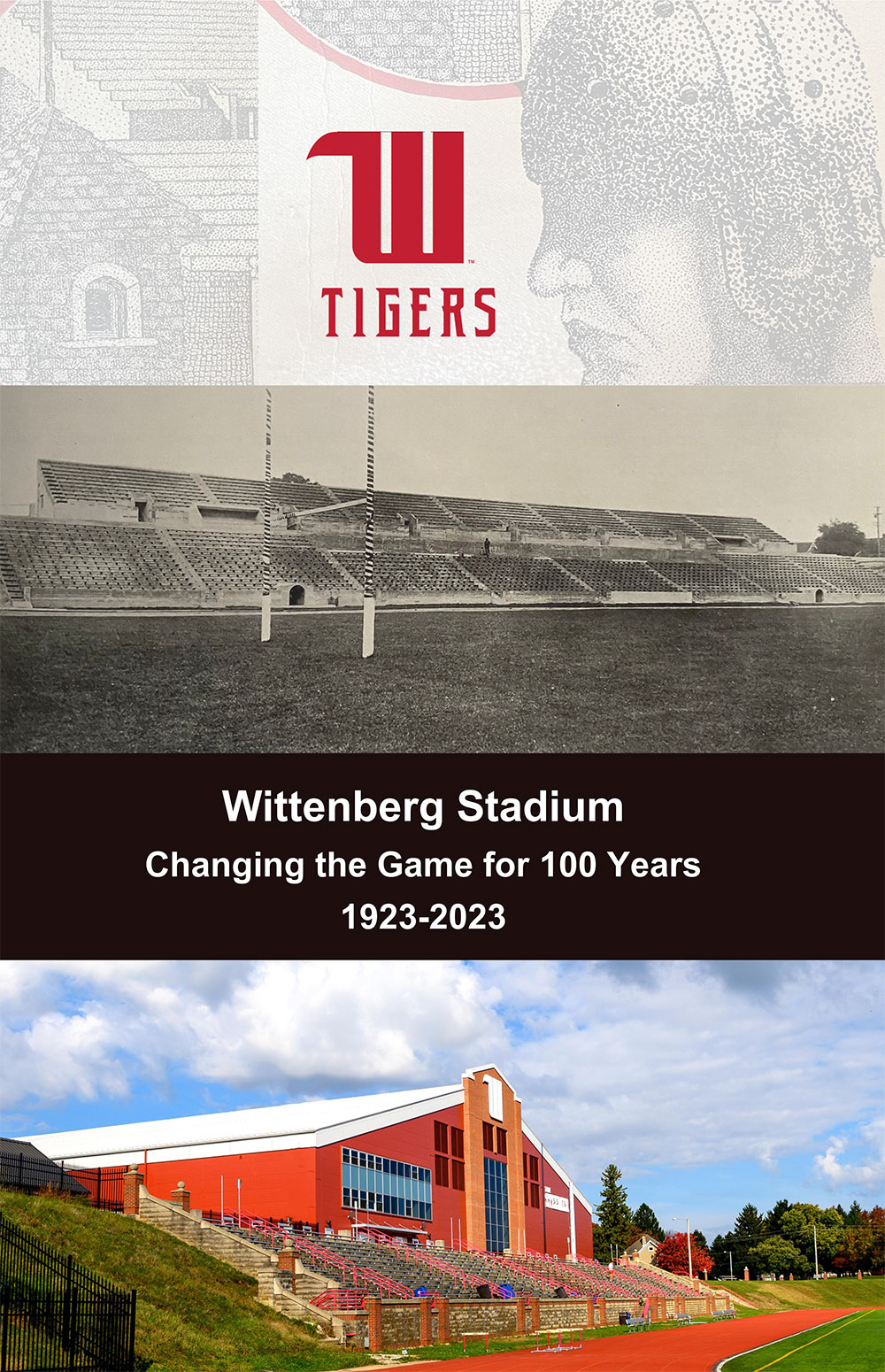 Previously, football had been played in a space known as Zimmerman Field. That day, Wittenberg football hosted Ohio Wesleyan in a game preceded by an academic procession and featuring marching bands and dignitaries from both schools introduced to a stadium-record crowd of 12,243.
Previously, football had been played in a space known as Zimmerman Field. That day, Wittenberg football hosted Ohio Wesleyan in a game preceded by an academic procession and featuring marching bands and dignitaries from both schools introduced to a stadium-record crowd of 12,243.
- Click image to download commemorative poster
The original Wittenberg Stadium took more than a year to construct, at a cost of approximately $100,000. With concrete stands seating 4,980, the Springfield Daily News described Wittenberg Stadium as the second largest college football stadium in Ohio, behind only Ohio Stadium in Columbus, which opened the year before in 1922.
Perhaps as then-Wittenberg President Rees Edgar Tulloss hoped, the events in October 2023 set the stage for a century of athletics achievement. Wittenberg Stadium, and the adjoining Health, Wellness & Athletics (HWA) Complex, has become a centerpiece for excellence and leadership in small college athletics as the home to a football program with five national championships and a track and field program that lays claim to three individual NCAA titles.
The field within Wittenberg Stadium was named for National College Football Hall of Fame coaches Bill Edwards and Dave Maurer after renovations completed in 1989, symbolic of both athletics excellence and a rich University tradition. Both Edwards and Maurer were football coaches at heart but also leaders of the entire athletics department, so fittingly the field that bears their names plays host to home games and most training sessions for seven of the University's intercollegiate athletics teams today.
In 1993, the $2.2 million Bill Edwards Drive Project installed Astroturf, lights (for the first time since 1967), and a new track. Wittenberg Stadium and Edwards-Maurer Field have served as the home of Tiger football since 1923, field hockey since 1993, men's lacrosse since 1968, women's lacrosse since 1972, and men's soccer and women's soccer since 2005.

